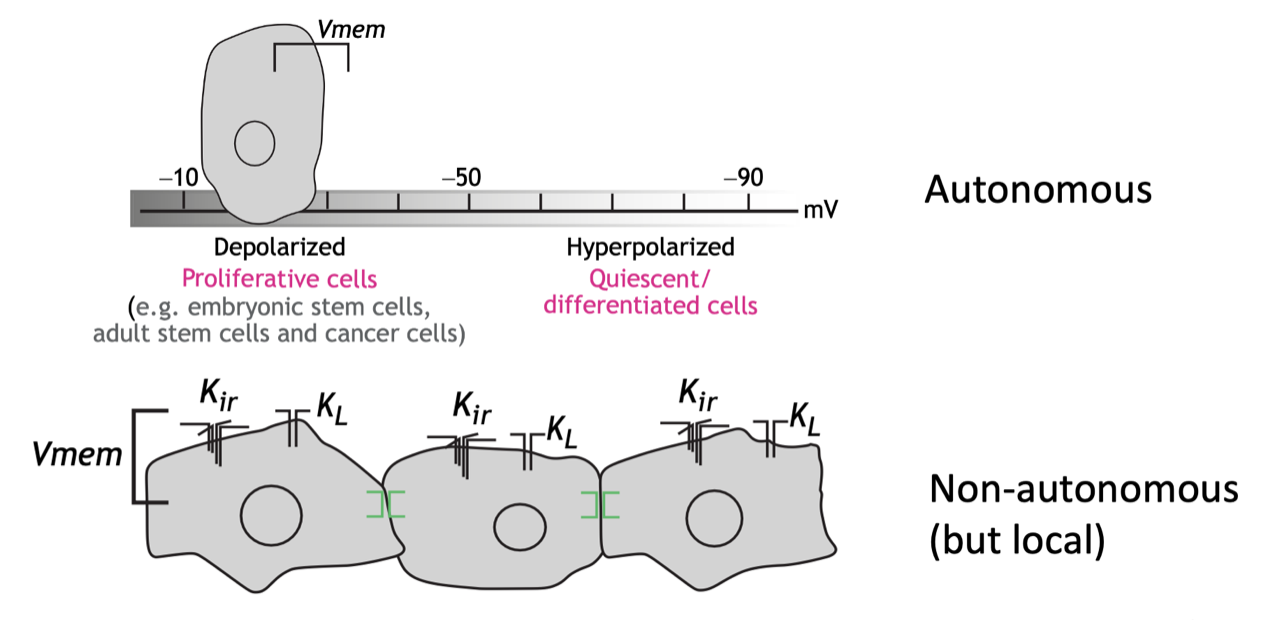Bioelectric signaling and development
We have uncovered a very specific role of activated potassium channel in regulating developmental pattern and growth rate of the developing and regenerating fins of the zebrafish. These genetic tools expose specific regulation of growth and differentiation by varied channels. Electrical gradients are an essential component of molecules, cells, tissues and organisms; electrical potentials form as a consequence, and driving force of respiration and across semi-permeable membranes. As such, it is hard to envision a specific role of bioelectric signals in development. However, there is growing evidence from experimental models and human channelopathies that modulation of the resting membrane potential of cells, and thus the electrical gradient of tissues may provide specific instructional information during development and as a signal in regeneration. Whether these shifts in electrical potential in a cell translate to specific developmental cues is unclear. Current work is focused on identifying the specific development signals and patterning response from the change of polarization and channel activation seen in these mutants. Is there differential readout of electrical potential that drives differential cellular fate in, or across tissues? Is bioelectricity imparting specific information to developing systems?
Key Publications
- Harris MP. (2021) Bioelectric signaling as a unique regulator of development and regeneration. Development. May 15;148(10):dev180794. PMID: 33999994
- Perathoner S, Daane J, Henrion U, Seebolm G, Higdon W, Johnson S, Nusslein-Volhard C, Harris MP. (2014) Bioelectric signaling regulates size in zebrafish fins. Plos Genetics, Jan;10(1):e1004080.
- Daane JM, Lanni J, Rothenberg I, Seebohm G, Higdon CW, Johnson SL, Harris MP. (2018). Potassium channel signaling instructs allometric growth rate independently from positional information in zebrafish fins. Sci Reports Jul 10;8(1):10391. doi: 10.1038/s41598-018-28450-6. PMID:29991812

